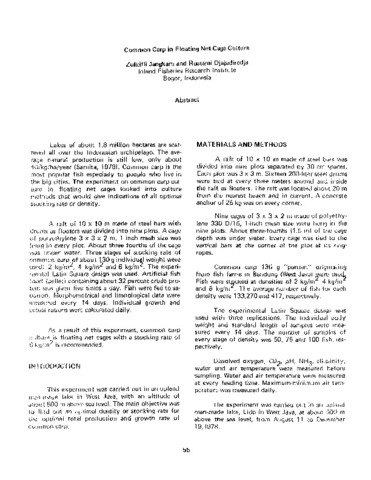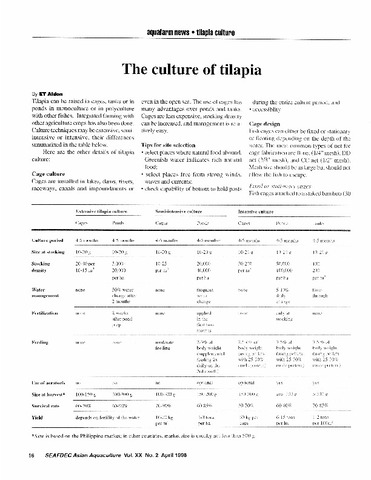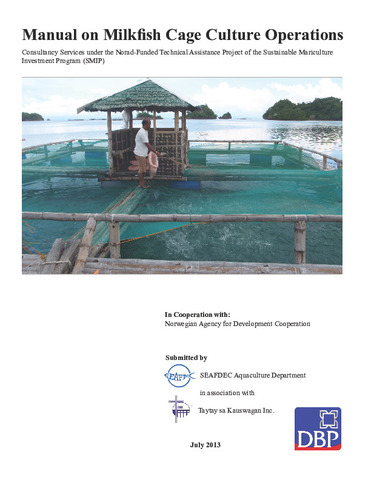Common carp in floating net cage culture
- Global styles
- MLA
- Vancouver
- Elsevier - Harvard
- APA
- Help
Share
Abstract
The main objective of this experiment was to determine the optimal density or stocking rate for the optimal total production and growth rate of common carp, Cyprinus carpio . A raft of 10 x 10 m made of steel bars with drums as floaters was divided into nine plots. A cage of polyethylene 3 x 3 x 2 m, 1 inch mesh size was hung in every plot. About three fourths of the cage was under water. Three stages of stocking rate of common carp of about 130 g individual weight were used: 2 kg/m2, 4 kg/m2 and 6 kg/m2. The experimental Latin Square design was used. Artificial fish food (pellet) containing about 32 percent crude protein was given five times a day. Fish were fed to satiation. Morphometrical and limnological data were measured every 14 days. Individual growth and actual rations were calculated daily. As a result of this experiment, common carp culture is floating net cages with a stocking rate of 6 kg/m2 is recommended.
Suggested Citation
Jangkaru, Z., & Djajadiredja, R. (1979). Common carp in floating net cage culture. In Proceedings of the International Workshop on Pen Cage Culture of Fish, 11-22 February 1979, Tigbauan, Iloilo, Philippines (pp. 55-60). Tigbauan, Iloilo, Philippines: Aquaculture Department, Southeast Asian Fisheries Development Center.
Type
Conference paperCollections
Related items
Showing items related by title, author, creator and subject.
-
The culture of tilapia
Aldon, Eva T. (Aquaculture Department, Southeast Asian Fisheries Development Center, 1998) -
Manual on milkfish cage culture operations
Southeast Asian Fisheries Development Center, Aquaculture Department; Taytay sa Kauswagan Inc.; Development Bank of the Philippines (DBP); Norwegian Agency for Development Cooperation (Aquaculture Department, Southeast Asian Fisheries Development Center, 2013-07)Milkfish (Chanos chanos, or bangus) culture is the largest finfish aquaculture industry in the Philippines and continues to be a top aquaculture commodity primarily because it is easy to culture and can be grown in a wide ... -
Prospects of milkfish sea cage farming
Cruz, Philip S. (Aquaculture Department, Southeast Asian Fisheries Development Center, 1998)






